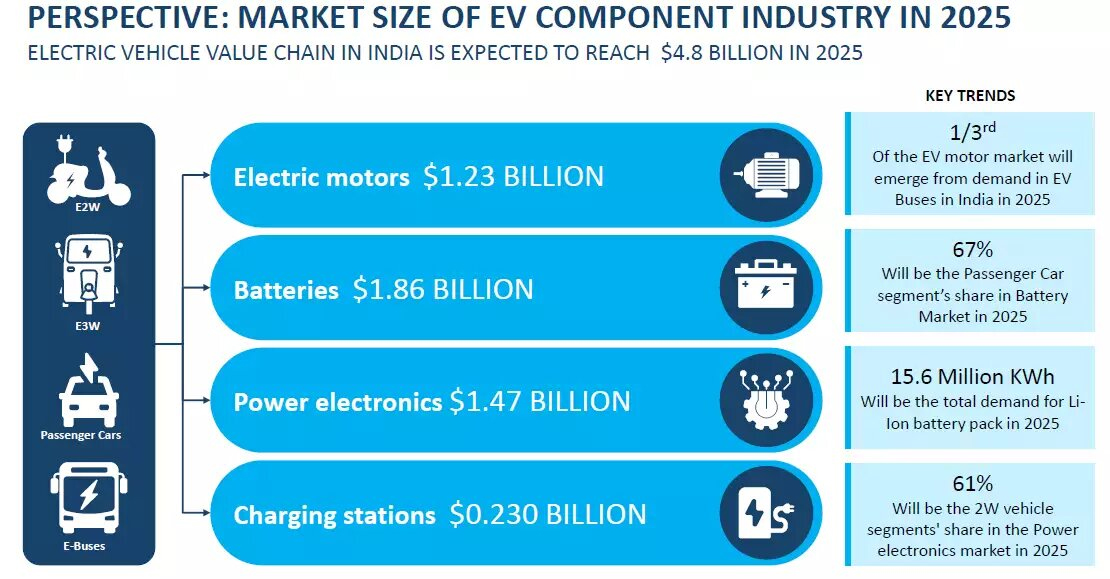Important Facts For Prelims
New Made-In-India EV Charging Standard
- 26 Oct 2023
- 5 min read
Why in News?
The Bureau of Indian Standards (BIS) has recently approved a groundbreaking charging connector standard for Light Electric Vehicles (LEVs), including scooters, bikes, and rickshaws.
What is India's New EV Charging Standard?
- About:
- Named ISI7017 (Part 2/Sec 7): 2023, this standard is a result of collaboration among NITI Aayog, the Department of Science and Technology, Ather Energy (a private firm), and other stakeholders.
- Unique Features of India's New EV Charging Standard:
- Remarkable feature of India's new EV charging standard is its ability to combine alternating current (AC) and direct current (DC) charging for LEVs.
- This approach, akin to globally established standards for electric cars, enhances interoperability and compatibility among various EV models and charging infrastructure providers.
- Consequences of Diverse Charging Standards:
- India's EV manufacturers, unlike those in some other countries, are not obligated to adhere to a specific charging standard. This results in different charging standards for EVs from different companies, paralleling the past situation of Apple and Android smartphones.
- For example, Ola Electric, Ather Energy, and Ultraviolette Automotive all employ distinct charging standards for their EVs.
- India's EV manufacturers, unlike those in some other countries, are not obligated to adhere to a specific charging standard. This results in different charging standards for EVs from different companies, paralleling the past situation of Apple and Android smartphones.
What are Different Charging Standards Worldwide?
- China:
- China uses a national standard for EV charging connectors that is called GB/T, effectively addressing range anxiety with a dense network of charging stations.
- United States:
- While there isn't a national standard, collaboration between EV manufacturers like Ford and General Motors aims to establish common standards.
- Europe:
- The Combined Charging System (CCS) standard dominates in Europe, backed by the European Union, promoting uniformity.
- Japan:
- Japan employs the CHAdeMO standard, though it's being phased out in North America in favor of more common standards.
What are Some Government Initiatives to Promote EV Adoption?
- The Faster Adoption and Manufacturing of Electric Vehicles (FAME)scheme II
- The National Electric Mobility Mission Plan (NEMMP)
- The National Mission on Transformative Mobility and Battery Storage
- Production Linked Incentive (PLI) scheme
- The Vehicle Scrappage Policy
- Go Electric campaign
- Global EV30@30 campaign
- The Ministry of Power, in its revised guidelines on charging infrastructure (MoP Guidelines), has prescribed that at least one charging station should be present in a grid of 3 km and at every 25 kms on both sides of the highways.
- The Ministry of Housing and Urban Affairs has also amended the Model Building Bye-laws, 2016 (MBBL) to mandate setting aside 20% of the parking space for EV charging facilities in residential and commercial buildings.
UPSC Civil Services Examination, Previous Year’s Question (PYQs)
Prelims:
Q. With reference to the Agreement at the UNFCCC Meeting in Paris in 2015, which of the following statements is/are correct? (2016)
- The Agreement was signed by all the member countries of the UN and it will go into effect in 2017.
- The Agreement aims to limit greenhouse gas emissions so that the rise in average global temperature by the end of this century does not exceed 2ºC or even 1.5ºC above pre-industrial levels.
- Developed countries acknowledged their historical responsibility in global warming and committed to donate $ 1000 billion a year from 2020 to help developing countries to cope with climate change.
Select the correct answer using the code given below:
(a) 1 and 3 only
(b) 2 only
(c) 2 and 3 only
(d) 1, 2 and 3
Ans: (b)
Mains:
Q. How is efficient and affordable urban mass transport key to the rapid economic development in India? (2019)





